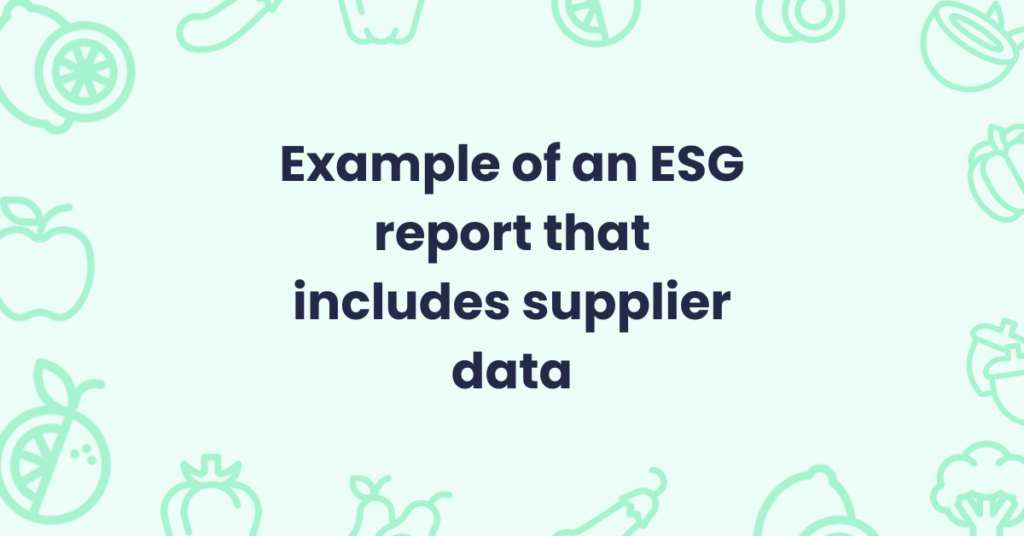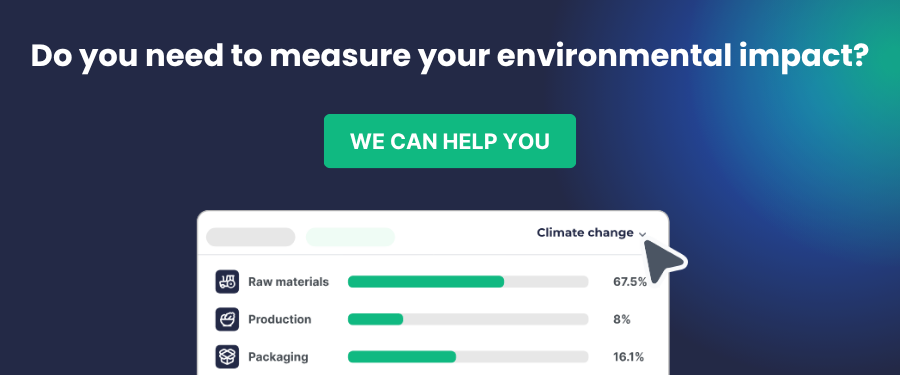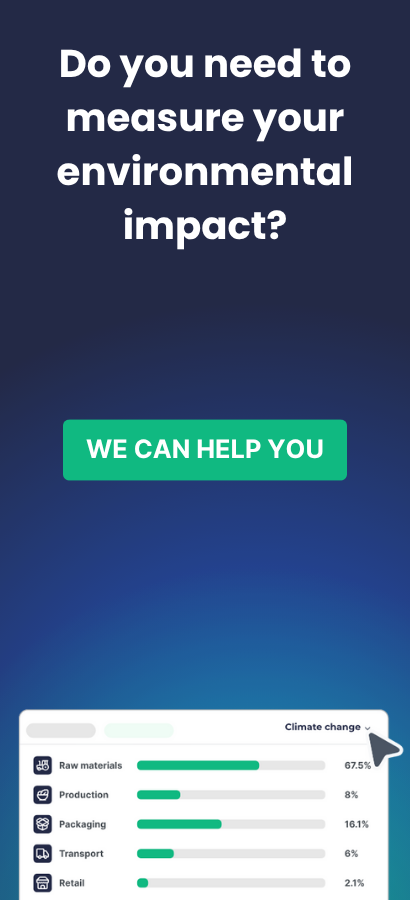Creating an ESG (Environmental, Social, and Governance) report that includes supplier data is essential for meeting sustainability regulations and standards. For example, the CSRD (Corporate Sustainability Reporting Directive) requires companies to collect, verify, and report information not only on their own operations but also across their supply chain, which makes reliable supplier data essential. This article provides a detailed example of how to structure an ESG report, ensuring that supplier data is accurately integrated and reported.
Why it’s important to include supplier data in your ESG report
Suppliers represent a significant part of a company’s environmental and social impact. Including supplier ESG data in your report allows you to have a more complete view of your supply chain performance and ensure transparency and traceability in your operations.
Benefits of integrating supplier data in your ESG report:
- Regulatory compliance: Ensures your report aligns with international regulatory requirements.
- Transparency: Increases the credibility of your ESG report by including verified information across the value chain.
- Better decision-making: Identifies risks and opportunities to improve sustainability in your supply chain.
- Corporate reputation: Shows investors, customers, and stakeholders your commitment to sustainability and social responsibility.
Structure of an ESG report that includes supplier data
Here’s a suggested structure for an ESG report that integrates supplier data.
- Introduction and sustainability commitment statement
The report should begin with a clear statement about the company’s commitment to sustainability, explaining the importance of involving suppliers in this process.
Example:
“At [Company Name], we believe that sustainability is not only a commitment to our internal operations but also to all actors in our supply chain. Through close collaboration with our suppliers, we have been able to collect and verify key ESG data, ensuring that our environmental and social impact is managed transparently and responsibly.” - Description of the methodology used to collect supplier ESG data
It’s essential that the report explains how supplier ESG data were collected, including the criteria used, the software platforms employed, and how the information was verified.
Example:
“For collecting ESG data from our suppliers, we used the [ESG software name] platform, which allowed us to centralize information from our global suppliers. Each supplier was evaluated based on criteria such as carbon emissions (Scopes 1, 2, and 3), water management, use of recycled materials, and working conditions. Data verification was conducted through independent audits.” - Key ESG performance indicators
This section presents key performance indicators (KPIs) that include both the company’s own data and that of its suppliers. These indicators should be aligned with CSRD requirements and broken down into environmental, social, and governance categories.- Environmental indicators (E):
Includes data such as supply chain carbon footprint (Scopes 1, 2 and 3), suppliers’ use of recycled materials, and water and waste management.
Example:- Carbon emissions (Scope 3): In fiscal year 2023, we collected data from [number] suppliers, representing 80% of our supply chain. The emissions reported by our suppliers totaled [XX,XXX] tons of CO₂, broken down as follows:
- Raw material transport: [XX,XXX] tons of CO₂
- Material production: [XX,XXX] tons of CO₂
- Distribution and logistics: [XX,XXX] tons of CO₂
- Water consumption: Our main suppliers in the agricultural sector reported a total water consumption of [XX,XXX] m³, 25% of which was recycled water. We have set goals to reduce water consumption by 15% by 2025.
- Carbon emissions (Scope 3): In fiscal year 2023, we collected data from [number] suppliers, representing 80% of our supply chain. The emissions reported by our suppliers totaled [XX,XXX] tons of CO₂, broken down as follows:
- Social indicators (S):
Presents data on labor rights and supplier working conditions, such as gender equality policies, living wages, and workplace health and safety.
Example:- Working conditions: 95% of our suppliers have occupational health and safety management certifications, and 85% have implemented anti-discrimination policies. Through external audits, we have verified compliance with labor standards among our suppliers.
- Fair wages: We ensure that 100% of our suppliers comply with local wage laws and labor agreements.
- Governance indicators (G):
Includes metrics related to governance practices in the supply chain, such as transparency in purchasing policies, anti-corruption efforts, and regulatory compliance.
Example:- Anti-corruption policies: We require that 100% of our suppliers implement codes of ethics that prohibit any form of corruption and bribery. Currently, 90% of our main suppliers hold governance best practices certifications, aligned with the ISO 37001 international anti-bribery management standard.
- Compliance audits: We conduct annual audits to ensure our suppliers comply with local and international fiscal and transparency regulations.
- Environmental indicators (E):
- Future sustainability objectives and goals
In this section, the company should present its long-term sustainability goals, both internal and related to suppliers, detailing how ESG data will be improved over time.
Example:
“Over the next five years, we are committed to reducing Scope 3 emissions by 20%, increasing the use of recycled materials in the supply chain by 30%, and ensuring that 100% of our suppliers have environmental certifications, such as ISO 14001.” - Verification and auditing of ESG data
It’s important to include a section describing how supplier ESG data were verified and audited, whether through internal audits or by independent third parties. This strengthens the credibility of the report.
Example:
“The ESG data presented in this report were verified by the independent entity [Auditor Company Name], following the standards of (indicate employed standards).” - Conclusions and next steps
Conclude the report with a summary of key sustainability achievements and an outline of actions that will be implemented in the future to continue improving ESG performance in collaboration with suppliers.
Example:
“This report reflects our ongoing commitment to sustainability and improving our supply chain practices. Through collaboration with our suppliers, we will continue advancing toward a more sustainable and transparent future. In the coming years, we aim to expand our network of certified suppliers and improve product traceability.”

Conclusion
A well-structured ESG report that includes supplier data is essential for complying with international regulations and demonstrating your company’s commitment to sustainability. By following a clear structure that addresses key performance indicators, data verification, and future objectives, your company can present a solid report aligned with international standards.



